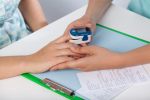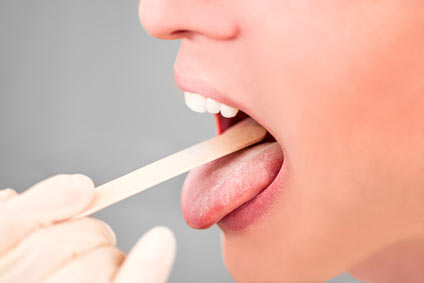Sleep Apnea Dental Device
Treatment with Dental Appliances for Sleep Apnea
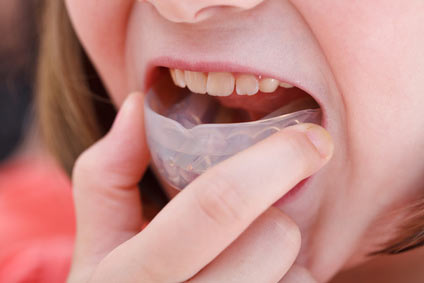
A sleep apnea dental device can be a effective replacement for CPAP therapy, especially when the CPAP makes your sleep worse.
In this article you'll discover:
- What is a dental device for sleep apnea?
- Who can have good results with the dental device?
- What types of dental appliances are most effective?
- Exercises to help you avoid changes & discomfort in your mouth while using the dental therapy.
- Advantages and disadvantages of oral devices for treating sleep apnea,
- How can a dentist help you treating your sleep disorder?
What Is a Sleep Apnea Dental Device?
Using a dental device, patients with sleep disorders (especially those with snoring and obstructive apnea) can improve their condition.
The oral appliance works by opening the upper airway through advancement of the mandible and tongue.
Advantages of Dental appliances vs CPAP machine
If you want to compare the effectiveness of sleep apnea dental device versus a CPAP machine, here are some advantages of dental appliance:
- less noticeable than a CPAP,
- make no noise,
- no need for power supply,
- cheaper than CPAP.
Types of Sleep Apnea Dental Devices
There are more than forty different dental devices for sleep apnea currently on the market , but the most common are:
| Types of Oral Appliances for Sleep Apnea |
Mandibular Repositioning Appliances - that advances the mandible in outward position. |
Tongue Retaining Appliances - that holds the tongue in an advanced position. |
Both these dental appliances demonstrated promise in reducing the upper airway obstruction. To read the clinical study about the effectiveness of dental appliances in treating OSA, click here.
Mandibular Repositioning or Advancement Devices
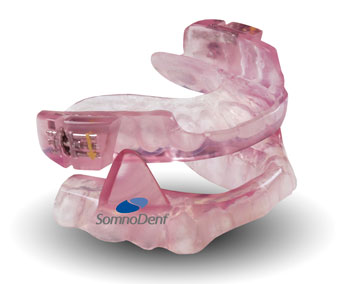
This apnea dental appliance holds the mandible forwards during sleep and may also modify upper airway muscle activity.
With MRD, the dimension of the upper airway are increased, particularly at the level of the tongue base.
The most effective mandibular advancement devices for moderate obstructive sleep apnea are:
- Thornton adjustable positioner
- SomnoDent or SomnoMed.
This video will explain how a mandibular advancement device works:
For more info about MRD for sleep apnea, see mandibular advancement devices.
Tongue Retaining Device
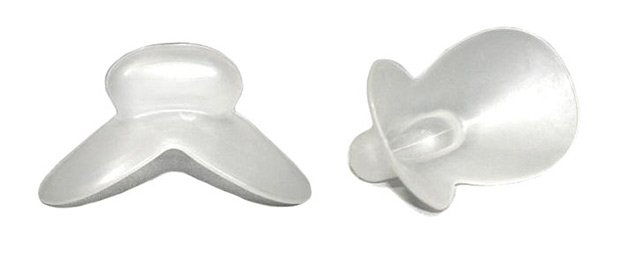
This was the first available sleep apnea dental device, developed by a physician who was trying to treat his own sleep breathing issues.
The tongue retaining device (TRD), also known as tongue stabilizing device (TSD), reposition the tongue in an anterior position, preventing from falling back into pharyngeal airway and in addition may cause mandibular advancement.
A suction bulb is used to anchor the tip of the tongue to the teeth or lips and hold it forwards.
To learn more about tongue devices, please see Tongue Retaining Device.
Who Benefits from Sleep Apnea Dental Device?
| Indications for Oral Devices |
Primary Snoring - for patients with snoring without OSA features who do not respond to behavioral treatments, such as positional therapy or weight loss. |
Mild and Moderate OSA - for patients with mild and moderate OSA who don't respond or tolerate CPAP, or fail with weight loss, sleep position change, and other alternative treatments. |
Severe OSA - for patients with severe obstructive apnea who failed CPAP therapy. |
Large Tongue - Patients with large or long tongue may benefit from tongue stabilizing device. |
Hyoid Bone Position - for patients with lowered position of the hyoid bone, which is a significant risk factor for OSA. |
Mandible and maxilla size - for OSA patients with short mandible or maxilla and also with reduced facial height. |
Enlarged or Elongated Uvula - a large size of the uvula may indicate a risk for OSA. |
Size of Soft Palate - the more that the soft palate inclines down into the throat, the greater the risk of having an obstruction. |
How Can a Dentist Treat Your Sleep Apnea
A dentist can recognize if you are at risk for obstructive apnea and snoring. He may see that you have conditions that indicate the risk of OSA and snorig, such as:
- tongue with scalloped borders,
- enlarged tongue, large tonsils or enlarged uvula,
- narrow airway,
- blocked nasal airway,
- wear on the teeth, which indicate sleep bruxism.
The dentist may ask you basic questions about your health history, and he may use the Epworth Sleepiness Scale to score your daytime sleepiness.
The next course of action will be a referral for a sleep study for further evaluation.
Most of the dental devices for sleep apnea (MRA) should be fitted by a qualified dentist trained in sleep medicine. However, some oral appliances can be custom fitted by the patient at home. They are usually effective only in primary snoring and mild OSA, such as VitalSleep mouthpiece.
A dentist can also help you avoid changes & discomfort in your mouth while using the sleep apnea dental device, like in this video:
Side effects of Oral Devices for Sleep Apnea
Like CPAP therapy or surgery, using a dental device to treat OSA has side effects, mostly related to maxillomandibular changes, tooth movement and masticatory muscle pain.
Side Effects of Dental Devices for OSA |
|
Mandibular Repositioning Device |
Tongue Retaining Device |
increased salivation, |
increase the production of saliva, |
dental hypersensitive and gagging, |
soreness of the tongue, |
a perception of an abnormal bite, |
poor tolerance of the treatment, |
face, muscle, and TMJ discomfort. |
moderately effective. |
Bottom line... A sleep apnea dental device may significantly improve mild to moderate OSA. There are also evidence of improvements in daytime sleepiness, memory and ability to learn.
If you choose this type of therapy, you should keep in mind that dental devices must be worn every night to have a successful outcome.

Sleep Apnea Guide › Sleep Apnea Dental Device

